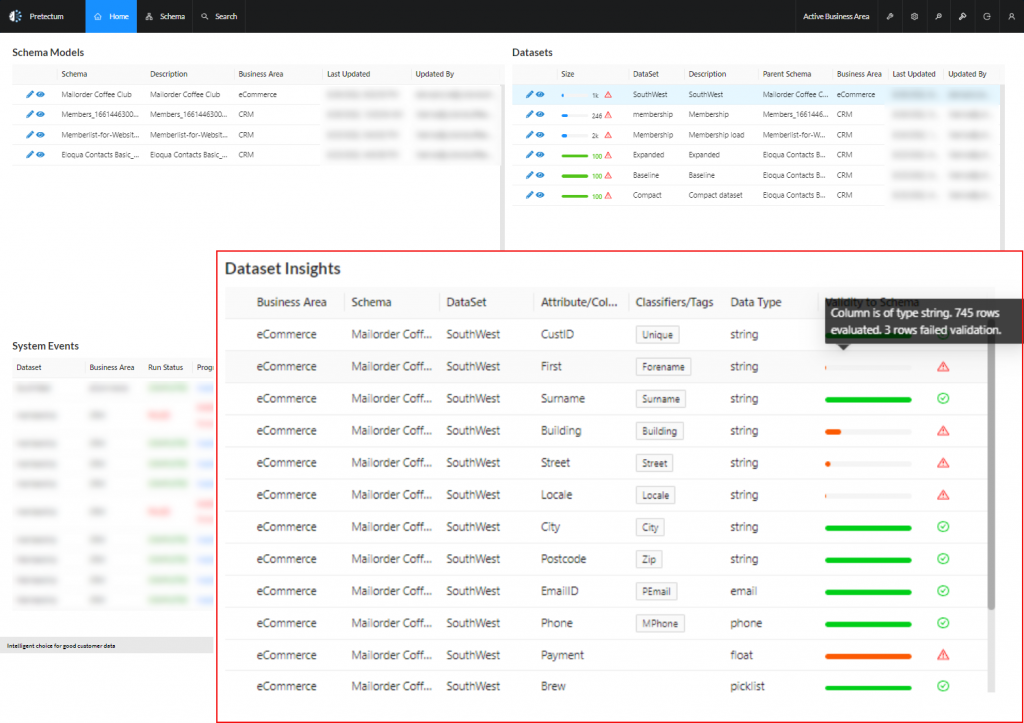In the complex landscape of enterprise-level Master Data Management (MDM) implementation, several critical challenges often obstruct the path to success.
One of the primary hurdles lies in horizontal coordination, where ensuring effective collaboration across numerous lines of business becomes a pivotal but challenging “people” issue.
The lack of synchronized systemic change management compounds the problem, requiring businesses to navigate alterations in both processes and master data perspectives, constituting a significant “process” challenge.
Another stumbling block is the quest for consistency in meaning, necessitating simplified procedures to resolve semantic discrepancies—an intricate “knowledge management” challenge.
Furthermore, the establishment of standardized business rules using MDM becomes a crucial “technology” issue, demanding meticulous management and enforcement of agreed data standards.
Challenges Rooted in People Dynamics
Horizontal coordination is fundamentally a “people” issue, it poses significant challenges in the context of MDM and Customer MDM (CMDM). Ensuring effective collaboration across diverse lines of business is essential for cohesive data management.
Siloed business and data operations, where each department operates independently, inhibit the seamless flow of information into the hands of those who need it and into the systems that they use.

To address this, fostering a culture of open communication and cross-functional collaboration is vital. It requires breaking down departmental barriers, encouraging knowledge sharing, and instilling a collective understanding of the importance of unified data across the organization. The use of a centralized CMDM solution like the Pretectum CMDM In a hub and spoke implementation for data syndication, can help.
The Intersection of Processes and Data
Coordinated systemic change, a critical “process” challenge, involves aligning alterations in business processes with master data views. Customer MDM necessitates not just refining customer data management structures but also adapting existing processes.
Mere tweaks in the customer data without corresponding changes in processes are insufficient. Organizations must be prepared to reevaluate and potentially re-engineer existing workflows.
This requires a deep dive into data and process workflows, identifying inefficiencies, and aligning them with optimized master data structures, ideally around solutions like the Pretectum CMDM.
The harmonious integration of process and data forms the bedrock of successful Customer MDM implementation and operations.
Knowledge Management
Consistency in meaning, a nuanced “knowledge management” challenge, is crucial for effective customer master data management.
Over time, disparate business terms are used without a common understanding of their definitions. Inconsistency in the use and application can then lead to confusion, especially when integrating data from various sources.
Establishing standardized semantics involves defining clear business terms and implementing robust data governance practices.
A centralized repository of business terms and their definitions fosters a shared understanding, ensuring uniform interpretation of data across the organization.
Standardized Business Rules Unify Data Management Understanding
Standardized business rules, a pivotal “technology” challenge, demand the utilization of MDM to enforce rules based on agreed data standards.
Inconsistencies in rule definitions across departments hinder streamlined operations. Standardization of business terminology and definitions is key to enabling unified data management. This is easily addressed when rule definitions are centralized as they are in the Pretectum CMDM.

Collaborative efforts between IT and business units are essential to align technological solutions with specific business requirements.
The alignment ensures that the CMDM technology solution serves simply as an enabler, facilitating the enforcement of standardized rules uniformly across the organization.
Proactive Strategies
A common issue faced during CMDM implementation and adoption is the emergence of reactive data management.
Often, issues surface only when they are likely to, or actually impact internal operations or customer experiences.
Reactive approaches are indicative of limited maturity in leveraging data as a strategic enterprise asset. Transitioning to proactive data management involves fostering cross-functional data coordination.
By encouraging a holistic understanding of data’s potential applications, organizations can identify new opportunities and optimize internal operations. Proactive strategies are instrumental in maximizing the benefits of CMDM, transforming data from a passive resource into a proactive catalyst for innovation and growth.
Paving the Way for Strategic Data Utilization
Technical data improvement lies at the heart of CMDM’s transformative potential for customer interaction and management.
Creating a unified view of customer master data compels technologists to refine definitions, document shared customer metadata, and address customer data discrepancies.
This systematic process initiates data quality and data governance, facilitating robust data sharing and reuse. Technical CMDM benefits, such as promoting consistent data use, enhancing reporting accuracy, improving data sharing, standardizing data validation, and ensuring completeness and consistency, empower organizations to make data-driven decisions.
The technical aspects of Customer MDM not only optimize day-to-day operations but also lay the foundation for strategic, data-informed business initiatives.
In essence, Customer MDM implementation accompanied by a customer master data management solution like the Pretectum CMDM transcends technicality; it’s a holistic endeavor that encompasses people, processes, knowledge, and technology.
Addressing these challenges requires a strategic approach, fostering a culture of collaboration, embracing proactive data management, and leveraging technology to unify data management efforts.
By navigating these challenges effectively, organizations can harness the full potential of CMDM, transforming customer data into a strategic asset that fuels innovation, enhances customer experiences, and propels the business toward sustainable growth.


